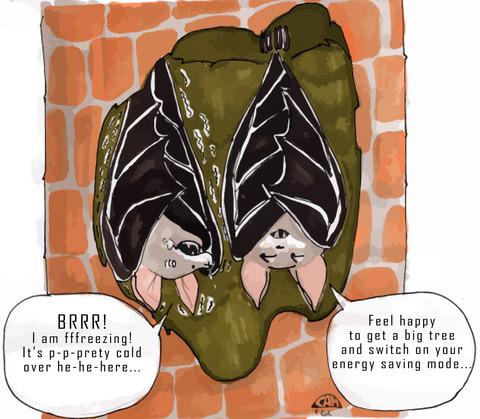当前位置:
X-MOL 学术
›
Austral Ecol.
›
论文详情
Our official English website, www.x-mol.net, welcomes your
feedback! (Note: you will need to create a separate account there.)
Roosting ecology of the southernmost bats, Myotis chiloensis and Histiotus magellanicus, in southern Tierra del Fuego, Chile
Austral Ecology ( IF 1.6 ) Pub Date : 2020-09-06 , DOI: 10.1111/aec.12950 Gonzalo Ossa 1, 2 , Thomas M. Lilley 3 , Austin G. Waag 4 , Melissa B. Meierhofer 3, 5 , Joseph S. Johnson 4
Austral Ecology ( IF 1.6 ) Pub Date : 2020-09-06 , DOI: 10.1111/aec.12950 Gonzalo Ossa 1, 2 , Thomas M. Lilley 3 , Austin G. Waag 4 , Melissa B. Meierhofer 3, 5 , Joseph S. Johnson 4
Affiliation

|
There are few studies of day‐roosting ecology of bats inhabiting the southernmost forests of South America, where cool summer temperatures and land management practices pose several challenges. The goal of the present study was to describe day‐roosting habitats and patterns of thermoregulation in two bat species occurring on Tierra del Fuego, Myotis chiloensis (Chilean myotis) and Histiotus magellanicus (southern big‐eared brown bat), during late austral spring. To do so, we tagged 17 bats with temperature‐sensitive radio‐transmitters, located 17 day‐roosts, and collected 81 days of skin temperature data. We concurrently recorded ambient air temperature to determine its effect on torpor use. Both species were found roosting in large diameter (77.8 ± 6 cm), typically live, Nothofagus pumilio trees (lenga) located on the edges of forest gaps or within stands primarily composed of smaller, younger trees. Bats of both species frequently used torpor, with skin temperatures dropping below a torpor threshold on 89% of days (n = 72) and daily minimum skin temperatures averaging 16.5°C over the course of our study. Average daily air temperature was a significant predictor of torpor use, with lower skin temperatures and more time spent in torpor observed on colder days. Minimum skin temperature and time spent torpid did not vary between bat species, nor did the characteristics of day‐roosts. These data show that spring ambient temperatures in Tierra del Fuego pose an energetic challenge that bats meet through frequent use of torpor and, likely, habitat selection. We recommend local conservation efforts keep these thermal challenges in mind by retaining large trees, which may provide warmer microclimates or room for social groups.
中文翻译:

智利火地岛南部最南端蝙蝠的栖息地生态,Myotis chiloensis和histellatus magellanicus
很少有关于栖息在南美最南端森林中的蝙蝠的日间栖息生态的研究,那里凉爽的夏季温度和土地管理实践带来了一些挑战。本研究的目的是描述南瑞秋春季在火地岛上发生的两种蝙蝠物种的日栖生境和温度调节模式,即奇异鼠(Chioti myotis)和麦哲伦鼠(南部大耳棕色蝙蝠)。为此,我们用温度敏感的无线电发射器标记了17只蝙蝠,定位在17天的栖息地,并收集了81天的皮肤温度数据。我们同时记录了周围的空气温度,以确定其对使用torpor的影响。发现这两种物种都栖息在大直径(77.8±6厘米)的地方,通常是活的,Nothofagus pumilio树木(lenga)位于森林间隙边缘或主要由较小,较年轻的树木组成的林分内。这两种物种的蝙蝠都经常使用torpor,在89%的天中皮肤温度下降到topor阈值以下(n = 72),并且在我们的研究过程中,平均每日最低皮肤温度为16.5°C。每日平均气温是使用玉米片的重要预测指标,在较冷的日子里,皮肤温度较低,花在玉米片上的时间更长。蝙蝠种类之间的最低皮肤温度和花时间对蝙蝠没有影响,昼间栖所的特征也没有变化。这些数据表明,火地岛的春季环境温度构成了一个充满挑战的挑战,蝙蝠通过频繁使用火炬以及可能的栖息地选择来遇到它们。我们建议当地的保护工作通过保留大树来记住这些热挑战,这可能为小团体提供温暖的气候或空间。
更新日期:2020-09-06
中文翻译:

智利火地岛南部最南端蝙蝠的栖息地生态,Myotis chiloensis和histellatus magellanicus
很少有关于栖息在南美最南端森林中的蝙蝠的日间栖息生态的研究,那里凉爽的夏季温度和土地管理实践带来了一些挑战。本研究的目的是描述南瑞秋春季在火地岛上发生的两种蝙蝠物种的日栖生境和温度调节模式,即奇异鼠(Chioti myotis)和麦哲伦鼠(南部大耳棕色蝙蝠)。为此,我们用温度敏感的无线电发射器标记了17只蝙蝠,定位在17天的栖息地,并收集了81天的皮肤温度数据。我们同时记录了周围的空气温度,以确定其对使用torpor的影响。发现这两种物种都栖息在大直径(77.8±6厘米)的地方,通常是活的,Nothofagus pumilio树木(lenga)位于森林间隙边缘或主要由较小,较年轻的树木组成的林分内。这两种物种的蝙蝠都经常使用torpor,在89%的天中皮肤温度下降到topor阈值以下(n = 72),并且在我们的研究过程中,平均每日最低皮肤温度为16.5°C。每日平均气温是使用玉米片的重要预测指标,在较冷的日子里,皮肤温度较低,花在玉米片上的时间更长。蝙蝠种类之间的最低皮肤温度和花时间对蝙蝠没有影响,昼间栖所的特征也没有变化。这些数据表明,火地岛的春季环境温度构成了一个充满挑战的挑战,蝙蝠通过频繁使用火炬以及可能的栖息地选择来遇到它们。我们建议当地的保护工作通过保留大树来记住这些热挑战,这可能为小团体提供温暖的气候或空间。











































 京公网安备 11010802027423号
京公网安备 11010802027423号